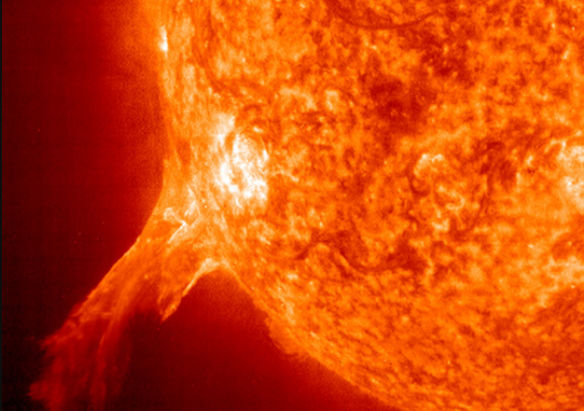Humans have technically touched the sun for the first time in history with NASA’s Parker Solar Probe, breaking through the sun’s atmosphere.
Thomas Zurbuchen, who works as NASA’s associate administrator of the Science Mission Directorate, lauded the achievement in a press release, saying “Parker Solar Probe ‘touching the Sun’ is a monumental moment for solar science and a truly remarkable feat. Not only does this milestone provide us with deeper insights into our Sun’s evolution and its impacts on our solar system, but everything we learn about our own star also teaches us more about stars in the rest of the universe.”
Also Read | Perseverance rover makes ‘unexpected’ volcanic discovery on Mars
While the solar probe was launched back in 2018, it kept steadily edging towards the sun. Finally, in April 2021, the probe travelled through the plasma corona, and towards the surface, which has a recorded temperature of 10 million degrees.
Also Read | NASA launches IXPE observatory to measure polarisation of X-rays
Interestingly, the probe cannot literally touch the sun’s surface, as it is not solid. The sun is a ball of gas, made up of different elements, chief among which are helium and hydrogen. Thus, when scientists speak about touching the sun, they refer to breaking through the superheated atmosphere, which is better known as corona. This mostly comprises of solar materials, which remain close to the sun due to magnetism and the sun’s gravitational pull.
Also Read | NASA completes 20 years of ‘TIMED’ mission
The specific boundary which Parker crossed is known as the Alfven critical surface. While cutting through the corona in a flyby, it sent back images of ‘coronal streamers’ to earth. These transmitted images show structures where the particle speed is slowed down due to the strength of magnetic forces. NASA calls them ‘pseudostreamers’ and the space organization is examining them at their origin, or up-close for the first time. However, these ‘pseudostreamers’ are visible from earth too, during solar eclipses.
This is just the beginning of Parker’s close passes, and the next flyby through the sun’s atmosphere will take place in the coming month.







